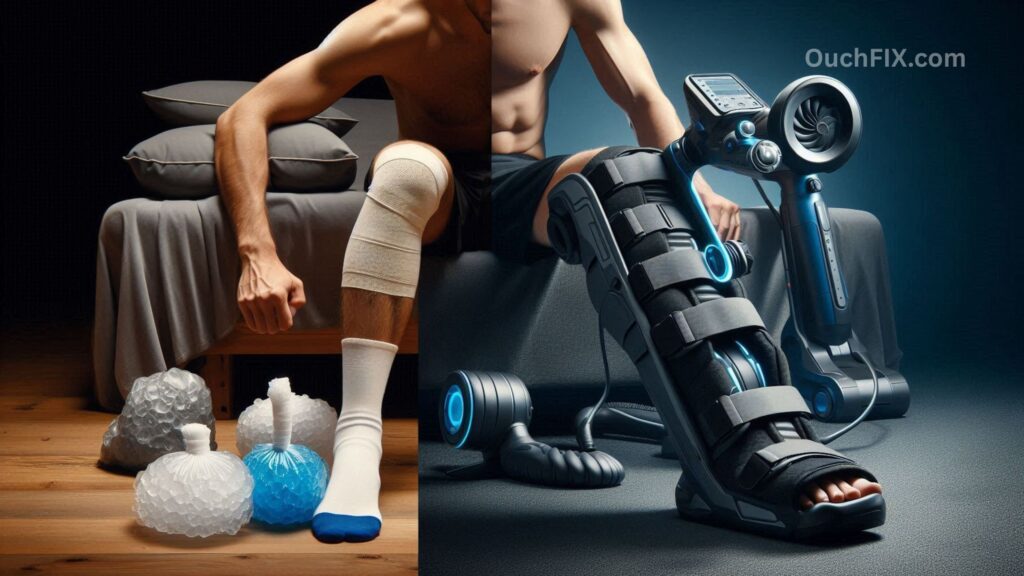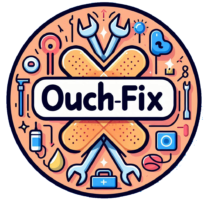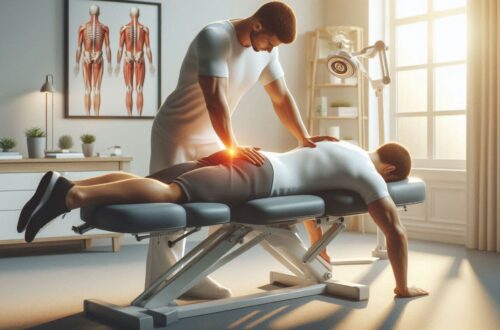Injuries are frustrating. Whether it’s a sprained ankle, torn ligament, or post-surgery recovery, they can throw your life off track. But modern medicine and sports science have transformed the way we bounce back. Today, recovery isn’t just about icing a sore muscle—it’s a combination of smart strategies, advanced technology, and whole-body care designed to get you back stronger than ever.
Here’s an in-depth guide to the latest expert-approved methods for injury recovery, complete with actionable tips, examples, and expert insights.
Getting the Basics Right

Why Recovery Time Is So Important
Think of recovery like baking a cake. Pull it out too early, and it’s a mess. The same goes for your body. Healing is a carefully timed process, and rushing it can lead to re-injury or chronic issues. Giving your body enough time ensures tissues rebuild stronger and more resilient.
Inflammation: Friend or Foe?
Inflammation often gets a bad reputation, but it’s actually the body’s first response to injury. The challenge comes when it lingers too long. Experts emphasize management over elimination—support the body’s natural repair mechanisms without letting inflammation become chronic.
Common Injuries & How They Heal
Most injuries progress through three stages, each requiring specific care:
- inflammation: The body responds to injury with swelling and pain.
- Repair: Cells rebuild tissues, and gentle movement can stimulate recovery.
- Remodeling: The tissue strengthens and regains function.
Skipping steps or overexerting too soon can prolong recovery or worsen the injury.
Example: An ACL tear may require weeks of controlled mobility exercises before full-strength training can resume. Following these stages carefully ensures a safer comeback.

Also Read: What Role does Nutrition Play in Pain Management According to Experts?
Old-School vs. Modern Recovery

R.I.C.E. Isn’t Dead, But…
Rest, Ice, Compression, and Elevation (R.I.C.E.) was once the gold standard. While it still has a role, experts now prefer methods that encourage gentle movement rather than complete rest.
Meet P.O.L.I.C.E.
The modern approach, P.O.L.I.C.E., stands for Protection, Optimal Loading, Ice, Compression, Elevation. Here’s the key difference:
Optimal Loading replaces total rest with controlled movement to stimulate tissue repair.
Gentle exercises improve circulation and prevent stiffness.
Ditch the “No Pain, No Gain” Mindset
Pain is the body’s natural warning system. Ignoring it can delay healing or worsen an injury. Modern recovery encourages listening to your body, balancing challenge with caution.
Next-Level Recovery Techniques

Blood Flow Restriction (BFR) Therapy
Using special bands to restrict blood flow slightly, BFR tricks muscles into thinking they’re lifting heavier weights than they actually are. It’s perfect for rehab when full workouts aren’t possible, preserving muscle mass and strength.
Cryotherapy: Not Just an Ice Bath
Cryotherapy chambers expose the body to extreme cold for a few minutes, reducing pain and inflammation while resetting the nervous system. Athletes use it for faster recovery between games or intense training sessions.
Hyperbaric Oxygen Therapy (HBOT)
In HBOT, you breathe pure oxygen in a pressurized room or pod. This boosts oxygen delivery to your tissues, helping them heal faster.
Red Light Therapy
in HBOT, patients breathe pure oxygen in a pressurized chamber. Increased oxygen delivery accelerates tissue repair, fights infection, and can shorten recovery times after injuries or surgeries.
PRP (Platelet-Rich Plasma) Injections
PRP therapy injects platelets from your own blood into injured areas to boost healing. Especially effective for joint, tendon, and ligament injuries, it harnesses the body’s natural growth factors.

Also Read: What are the Top Pain Management Tips Recommended by Physiotherapists?
Recovery Meets Technology

Wearable Recovery Gadgets
From smart sleeves to adaptive compression bands, wearable devices now monitor muscle activity, swelling, and recovery progress. Some even provide gentle electric stimulation to speed up healing while you rest.
AI Physical Therapy Apps
Busy schedules don’t have to derail recovery. AI-powered apps use your phone’s camera to guide exercises, track form, and give feedback—essentially putting a physical therapist in your pocket
Smart Compression Gear
Modern compression clothing adapts to your body’s needs, improving circulation and support exactly where it’s needed most.
Fueling Your Recovery

Eat to Heal: Anti-Inflammatory Diet
Add more greens, berries, fatty fish, and turmeric to your plate. These foods fight inflammation and help your body repair itself.
Smart Supplements
- Collagen: Supports joints and tissue repair
- Omega-3s: Reduce inflammation
- Vitamin D: Strengthens bones
- Magnesium: Supports muscles and nerves
Don’t Forget Water
Water is essential for nutrient delivery and tissue repair. Aim for 2–3 liters per day, especially during active recovery phases.
Mind Over Muscle

Why Mental Health Matters
Recovery isn’t just physical. Stress, anxiety, and frustration can slow down the healing process. A strong mindset accelerates recovery and boosts resilience.
- Try Visualization and Mindfulness
Visualization: Imagine yourself performing movements or fully recovered. - Mindfulness: Practice deep breathing to reduce stress.
- Pro Tip: Studies show combining mental techniques with physical rehab can improve outcomes, especially in sports injuries.
Tailoring Your Comeback

DNA-Based Recovery Plans
Some clinics now use genetic insights to customize recovery, predicting inflammation levels, optimal exercises, and nutrient needs.
Work With Experts
Physical therapists, sports trainers, and rehab specialists create personalized plans that fit your body, lifestyle, and goals. Forget cookie-cutter programs—recovery is now highly individualized.

Also Read: What Techniques do Doctors Recommend for Acute Pain Relief?
Sleep: The Unsung Hero
Why Deep Sleep Is Crucial
During deep sleep, the body releases growth hormones that repair tissue. Cutting sleep short can dramatically slow recovery, no matter how perfect your diet or exercises are.
Tools for Better Sleep
- Blackout curtains to improve darkness
- White noise apps to block distractions
- Sleep trackers to monitor quality
Tip: Even small improvements in sleep quality can make recovery faster and more efficient.
Conclusion & Call to Action
Recovery has evolved. Modern injury rehabilitation combines science, technology, nutrition, mental training, and personalized care to help you return stronger and smarter. Whether you’re a weekend warrior or a professional athlete, understanding and applying these expert-approved strategies can significantly shorten downtime and reduce the risk of re-injury.
Take Action: Talk to a physical therapist, explore wearable recovery tools, and prioritize sleep, nutrition, and gentle movement. Your body will thank you—and get back to peak performance faster.
FAQs About Injury Recovery
Q1. How long does it take to recover from a common sprain?
Recovery varies, but mild sprains may take 2–6 weeks, while severe sprains or ligament injuries can require months.
Q2. Are supplements necessary for healing?
Not always, but collagen, omega-3s, vitamin D, and magnesium can support faster recovery when combined with a balanced diet.
Q3. Can I exercise while injured?
Yes—controlled, gentle movement (P.O.L.I.C.E.) helps maintain mobility and strength without delaying healing.
Q4. Is cryotherapy safe for everyone?
Mostly yes, but people with cardiovascular issues or cold sensitivities should consult a doctor first.
Q5. How does mental health impact physical recovery?
High stress can slow tissue repair and prolong pain. Mindfulness and visualization improve both mindset and physical outcomes.






